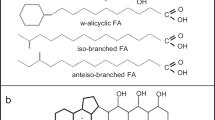Abstract
We live on a cold planet where more than 80% of the biosphere is permanently below 5°C, and yet comparatively little is known about the genetics and physiology of the microorganisms inhabiting these environments. Based on molecular probe and sequencing studies, it is clear that Archaea are numerically abundant in diverse low-temperature environments throughout the globe. In addition, non-low-temperature-adapted Archaea are commonly exposed to sudden decreases in temperature, as are other microorganisms, animals, and plants. Considering their ubiquity in nature, it is perhaps surprising to find that there is such a lack of knowledge regarding low-temperature adaptation mechanisms in Archaea, particularly in comparison to what is known about archaeal thermophiles and hyperthermophiles and responses to heat shock. This review covers what is presently known about adaptation to cold shock and growth at low temperature, with a particular focus on Antarctic Archaea. The review highlights the similarities and differences that exist between Archaea and Bacteria and eukaryotes, and addresses the potentially important role that protein synthesis plays in adaptation to the cold. By reviewing the present state of the field, a number of important areas for future research are identified.
Similar content being viewed by others
Author information
Authors and Affiliations
Additional information
Received: August 10, 2000 / Accepted: September 26, 2000
Rights and permissions
About this article
Cite this article
Cavicchioli, R., Thomas, T. & Curmi, P. Cold stress response in Archaea. Extremophiles 4, 321–331 (2000). https://doi.org/10.1007/s007920070001
Issue Date:
DOI: https://doi.org/10.1007/s007920070001



